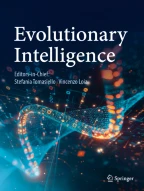Abstract
The problem of grain transportation optimization is a typical NP-complete problem. To solve the problem, it is necessary to construct a mathematical model for the optimization of grain transportation. As the single-objective grain transportation route optimization model is difficult to better simulate the complex and varied conditions in real life, the multi-objective grain transportation route optimization model is closer to reality and has more guiding significance for practical problems. Therefore, this paper constructs a multi-objective grain transportation optimization problem model. And improved the artificial fish swarm algorithm to make it can be better solution. First, a similar fragment distance is introduced to replace the traditional distance calculation method. Second, we play the guiding role of bulletin board to insert the optimal solution fragment in the bulletin board into the current solution. Finally, according to the characteristics of food transportation problems, three behaviors of artificial fish were improved and mixed neighborhood search was conducted. In simulation experiments, the precision of the traditional artificial fish algorithm and improved algorithm is more and more low with the increase of amount of data. The difference between that and the optimal solution in the database is becoming more and more big, but the error in not only path length but also the number of vehicles of the improved algorithm is still within the scope of the permit. The error of the traditional artificial fish algorithm is far beyond permissible range. Experimental results show that the improved artificial fish swarm algorithm achieves high solution accuracy in path length and the number of vehicles. However, because there is no time window constraint, the conflict between the number of vehicle and the path length is very small. Finally, the set of Pareto solutions converges to 1 or 2 points.
Similar content being viewed by others
Explore related subjects
Discover the latest articles, news and stories from top researchers in related subjects.References
Hou ESH, Ansari N, Ren H (1994) Genetic algorithm for multiprocessor scheduling. IEEE Trans Parallel Distrib Syst 5(2):113–120
Li N, Zou T, Sun DB (2004) Particle swarm optimization for vehicle routing problem. J Syst Eng 19(6):596–600
Diego FJ, Gómez EM, Ortega-Mier M et al (2012) Parallel CUDA architecture for solving de VRP with ACO. In: Industrial engineering: innovative networks. Springer, London, pp 385–393
Ma XM, Liu N (2014) Improved artificial fish-swarm algorithm based on adaptive vision for solving the shortest path problem. J Commun 1:1–6
Xiao J, Zheng X, Wang X et al (2006) A modified artificial fish-swarm algorithm. In: The sixth world congress on intelligent control and automation, WCICA 2006. IEEE, pp 3456–3460
Huang R, Tawfik H, Nagar AK (2009) A novel hybrid QoS multicast routing based on clone selection and artificial. In: Proceedings of the second international conference on developments in system engineering, pp 47–52
Ma M, Liang JH, Sun L (2010) SAR image segmentation based on SWT and improved AFSA. In: Proceedings of the third international symposium on intelligent information technology and security informatics, pp 146–149
Wang Y, Wu XJ, Wang ST et al (2008) Facial expression recognition using RBF neural network based on improved artificial fish swarm algorithm. In: Proceedings of the 17th Chinese control conference, pp 416–420
Tian WJ, Liu JC (2010) A novel approach to fuzzy logic controller design. In: Proceedings of the second international conference on computer modeling and simulation, pp 112–115
Gong DS, Che JX, Wang JZ (2008) Short-term electricity price forecasting based on novel SVM using artificial fish swarm algorithm under deregulated power. In: Proceedings of the second international symposium on intelligent information technology application, pp 85–89
Wang F, Xw XH, Zhang J (2009) Application of artificial fish school and K-means clustering algorithms for stochastic GHP. In: Proceedings of Chinese control and decision conference, pp 4280–4283
Gao YF, Chen YD (2010) The optimization of water utilization based on artificial fish swarm algorithm. In: Proceedings of the sixth international conference on natural computation, pp 4415–4419
Zhang HF (2009) Research on the application of ant colony algorithm in the optimization of logistics distribution path. Jiangsu University, Zhenjiang, pp 26–27
Zheng YJ, Zhang MX, Ling HF et al (2015) Emergency railway transportation planning using a hyper-heuristic approach. IEEE Trans Intell Transp Syst 16(1):321–329
Guo Z, Zhang D, Liu H et al (2016) Green transportation scheduling with pickup time and transport mode selections using a novel multi-objective memetic optimization approach. Transp Res Part D Transp Environ, S1361920916000146
Zheng YJ, Chen SY (2013) Cooperative particle swarm optimization for multiobjective transportation planning. Appl Intell 39(1):202–216
Author information
Authors and Affiliations
Corresponding author
Additional information
Publisher's Note
Springer Nature remains neutral with regard to jurisdictional claims in published maps and institutional affiliations.
Rights and permissions
About this article
Cite this article
Jia, S., Zhou, K., Zhou, S. et al. An artificial fish swarm algorithm for a multi-objective grain transportation problem. Evol. Intel. 13, 9–19 (2020). https://doi.org/10.1007/s12065-019-00228-3
Received:
Revised:
Accepted:
Published:
Issue Date:
DOI: https://doi.org/10.1007/s12065-019-00228-3
